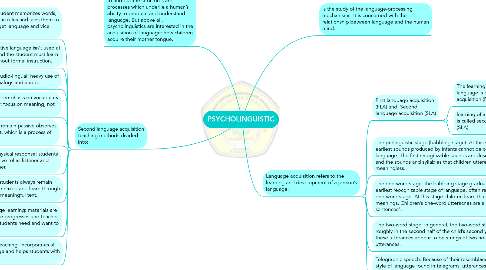PSYCHOLINGUISTIC
by nurmeida urwani


1. to find out the structures and processes which underlie a human’s ability to produce and understand language. But above all, psycholinguistics are interested in the acquisition of language: how children acquire their mother tongue.
2. Second language acquisition teaching methods divided into:
2.1. Grammar-translation: the student memorizes words, inflected words, and syntactic rules and uses them to translate from native to target language and vice versa.
2.2. Direct method: the native language isn't used at all in the classroom, and the student must learn the new language without formal instruction.
2.3. Audio-lingual: heavy use of dialogs and audio.
2.4. Natural approach: emphasis on vocabulary and not grammar; focus on meaning, not form.
2.5. Silent way: teachers remain passive observes while students learnt, which is a process of personal growth.
2.6. Total physical response: students play active rol as listener and performer.
2.7. Suggestopedia: students always remain comfortable and relaxed and learn through memorization of meaningful text.
2.8. Community language learning: materials are developed as course progresses and teacher understands what students need and want to learn.
2.9. Community language teaching: incorporates all components of language and helps students with various learning styles.
3. is the study of the language-processing mechanisms. It is concerned with the relationship between language and the human mind.
4. Language acquisition refers to the learning and development of a person’s language.
4.1. First language acquisition (FLA) and Second language acquisition (SLA)
4.1.1. The learning of a native or first language is called first language acquisition (FLA).
4.1.2. learning of a second or foreign language is called second language acquisition (SLA).
